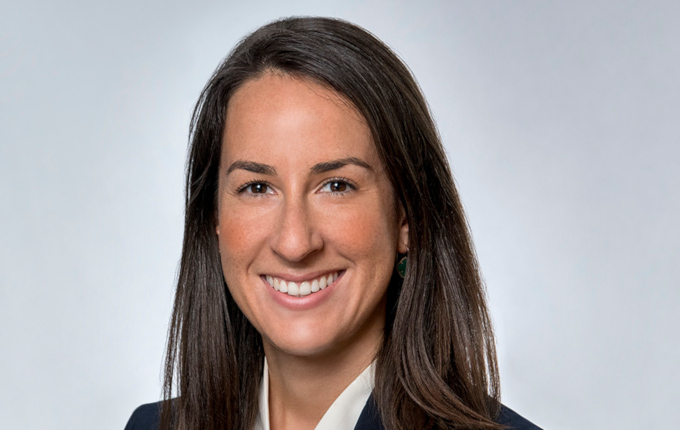Investors worldwide are increasingly looking to securitised debt strategies as an alternative to absolute return bond funds, new research into securitisation by bfinance finds.
In the current low interest rate environment with no sight of a rise anytime soon, institutional investors have been looking to securitised credit strategies for yield, liquidity and diversification.
According to new research by asset consultant bfinance, investors worldwide are increasingly using conservative securitised credit as an alternative to absolute return bond funds.
The research found that especially collateralised loan obligations (CLO’s) have been popular among investors globally.
“This is the sub-sector that has received perhaps the most attention from investors in 2020, in part due to widening spreads and in part due to the significant changes in this market since 2008,” the report said.
“Annual issuance has soared, driven by supply in the growing leveraged loan market. There is a diverse client base for these securities, including banks, asset managers, insurers, pension funds and hedge funds.”
Australia
The interest among Australian investors has been a bit more muted, partly because of the regulatory requirements here, Daniele Goldberg, Client Consultant at bfinance told [i3] Insights.
“Australian asset owners, in particular the superannuation funds, are extremely price sensitive, more so than ever with the current regulatory backdrop if you think of the APRA heatmap, for instance,” Goldberg said.
“And securitised credit does tend to be more expensive, due to the complexity and the need for specialised investment teams with the ability to model vast amounts of data.”
The proposed ‘Your Future, Your Super’ reforms will only add to the pressure on investors to favour simple, low-cost investment strategies over more complex ones, since it has set very tight guidelines on the investment management cost that funds should aim for.
But despite the headwinds for these strategies in Australia, Goldberg has noticed an increased willingness among investors to discuss them.
“We have definitely seen an uptick in discussions due to the lower for longer interest environment we are in, and also because of the diversifying benefits that you get from securitised credit,” Goldberg said.

Australian asset owners, in particular the superannuation funds, are extremely price sensitive, more so than ever with the current regulatory backdrop. And securitised credit does tend to be more expensive, due to the complexity and the need for specialised investment teams – Daniele Goldberg
“The conversations that we’ve been having more recently tended to be about more nuanced approaches to securitised credit, with the clients looking at multi-sector credit funds with an element of securitised credit exposure, such as CLOs.
“Our conversations really have been more niche in that sense, for example credit risk transfer. But no one is looking to dive straight into it, especially not the more aggressive options,” she said.
Credit risk transfer securities assign a portion of the risk associated with credit losses within pools of mortgage-backed securities to the private sector. As of December 2019, over US$99 billion in these types of securities had been issued.
Moving on from the GFC
As part of the research, bfinance analysed 185 securitised debt strategies from 75 global asset managers, covering over $600 billion in assets under management. The securitised credit strategies range from aggressive, with cash plus 5-10 per cent return targets, to more conservative ones that target cash plus 1-2 per cent.
They published their findings in a recent report titled ‘Sector in Brief: Securitised Credit’. This report notes that the securitised credit sector has evolved considerably over the last decade, introducing many new regulatory requirements since the global financial crisis.
“Securitised debt has evolved considerably over the last decade and is no longer an asset class that should be tarnished by pre-GFC practices,” Kunal Chavda, co-author of the report and Director of Public Markets at bfinance said.
“The asset class is underpinned by much higher quality underwriting, structural protections and regulatory requirements.

“Securitised debt has evolved considerably over the last decade and is no longer an asset class that should be tarnished by pre-GFC practices. The asset class is underpinned by much higher quality underwriting, structural protections and regulatory requirements – Kunal Chavda
“Since the sector has been responsive to the challenges of 2020, we expect investor demand for securitised debt strategies to continue to rise, buoyed in part by long-term data on diversification and return enhancement and by the perceived market dislocations,” Chavda said.
And the sector continues to evolve with managers looking to introduce longer lock-up periods, following the coronavirus pandemic induced liquidity issues in March this year.
“Most closed ended strategies will operate on either a direct lending style 7 year vehicle (2-3 years investment period and 4-7 years harvesting) whereby capital is drawdown in stages at the outset whilst the fund is ramped up,” Chavda said.
“Or they operate on a shorter period of 3-4 years during which the initial invested capital is under a soft lock for 12 months after which the fund is subject to semi-annual or annual redemptions.”
__________
[i3] Insights is the official educational bulletin of the Investment Innovation Institute [i3]. It covers major trends and innovations in institutional investing, providing independent and thought-provoking content about pension funds, insurance companies and sovereign wealth funds across the globe.


